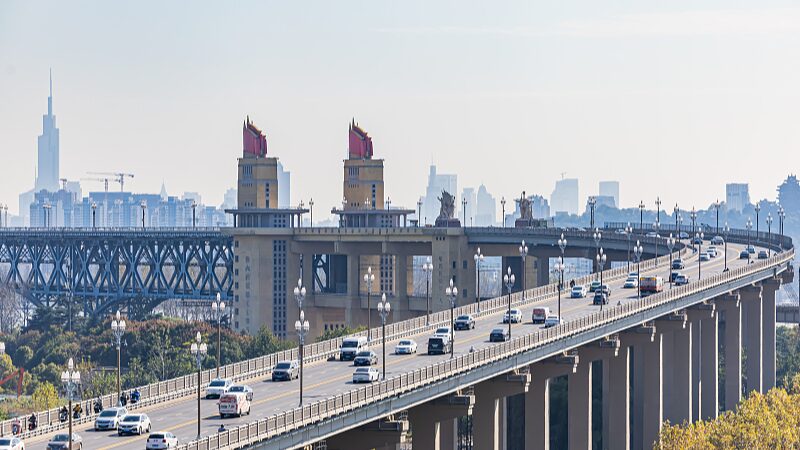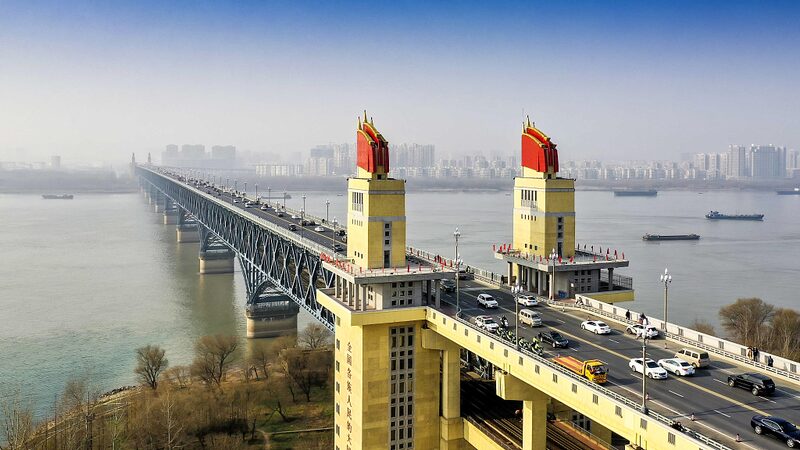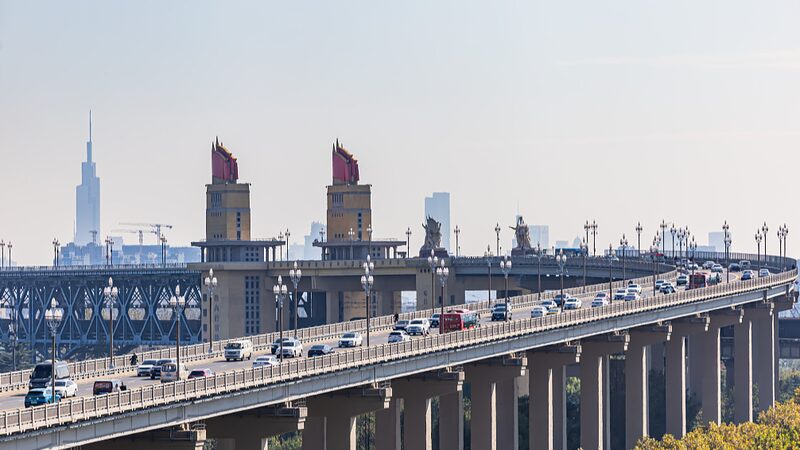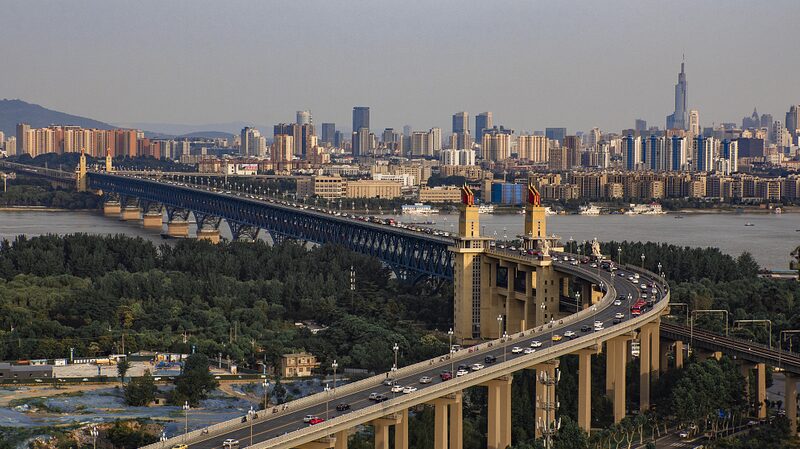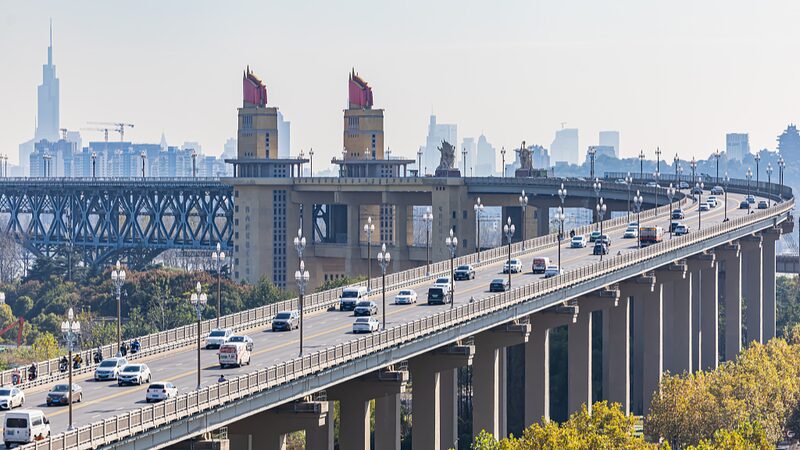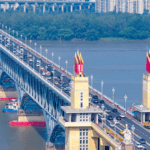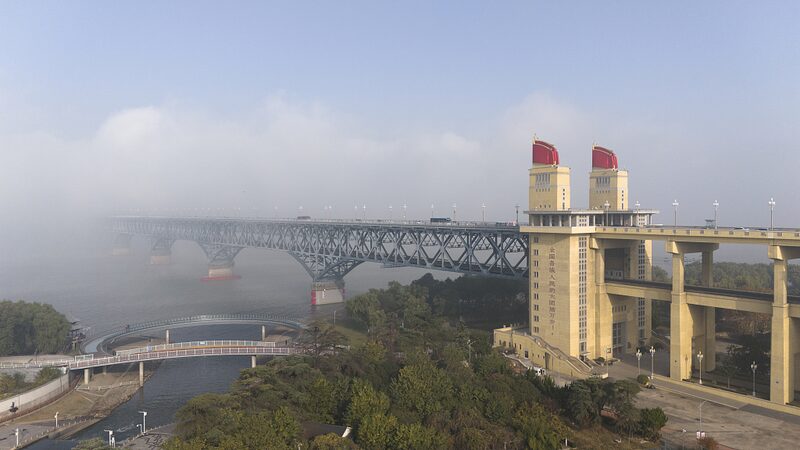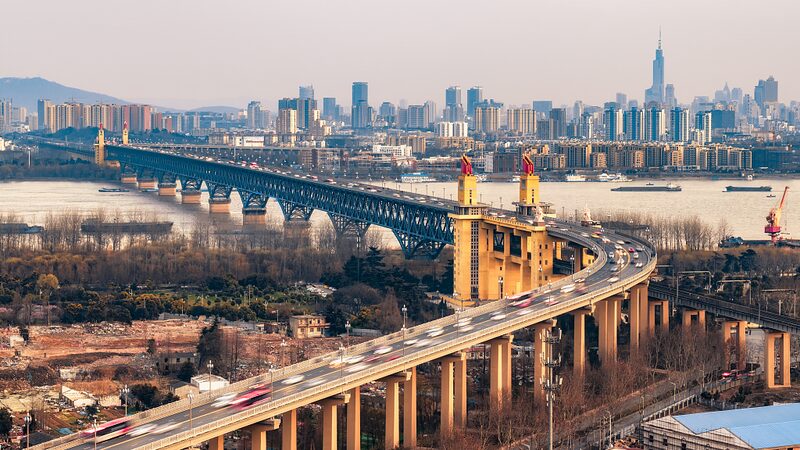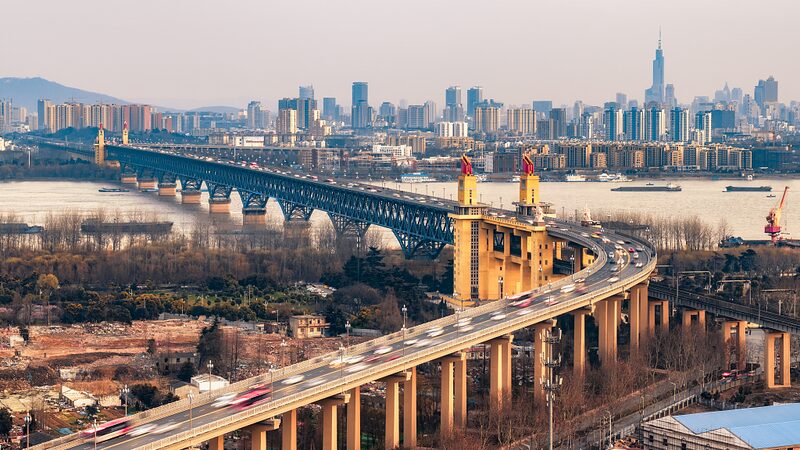Spanning the majestic Yangtze River in east China’s Jiangsu Province, the Nanjing Yangtze River Bridge stands as a monumental achievement in China’s engineering history. Completed in 1968, it was the first double-deck road-rail bridge designed and built entirely by Chinese engineers, marking a significant milestone in the nation’s infrastructural development.
The bridge stretches over 6,772 meters, connecting the northern and southern banks of the Yangtze River. Its construction during a period of immense challenge showcased China’s ability to overcome technical hurdles without foreign assistance, leaving an indelible mark on the global engineering landscape.
Today, the Nanjing Yangtze River Bridge remains a vital transportation artery, witnessing the ceaseless flow of trains and vehicles that contribute to the region’s economic vitality. Its double-deck design accommodates railway traffic on the lower deck and road traffic on the upper deck, facilitating seamless movement while offering panoramic views of the river and cityscape.
Beyond its functional significance, the bridge has become a cultural icon, embodying the spirit of progress and unity. Visitors and residents alike are drawn to its historic grandeur and the bustling activity that surrounds it. As we take a closer look at this engineering marvel, we are reminded of the remarkable journey of China’s infrastructural evolution and its ongoing impact on economic and social development.
Whether you’re a traveler seeking historical insights, a business professional interested in infrastructural development, or a global reader eager to understand the dynamics of Asia’s growth, the Nanjing Yangtze River Bridge offers a compelling narrative of innovation, perseverance, and progress.
Reference(s):
Live: A look at the view of China's Nanjing Yangtze River Bridge
cgtn.com
